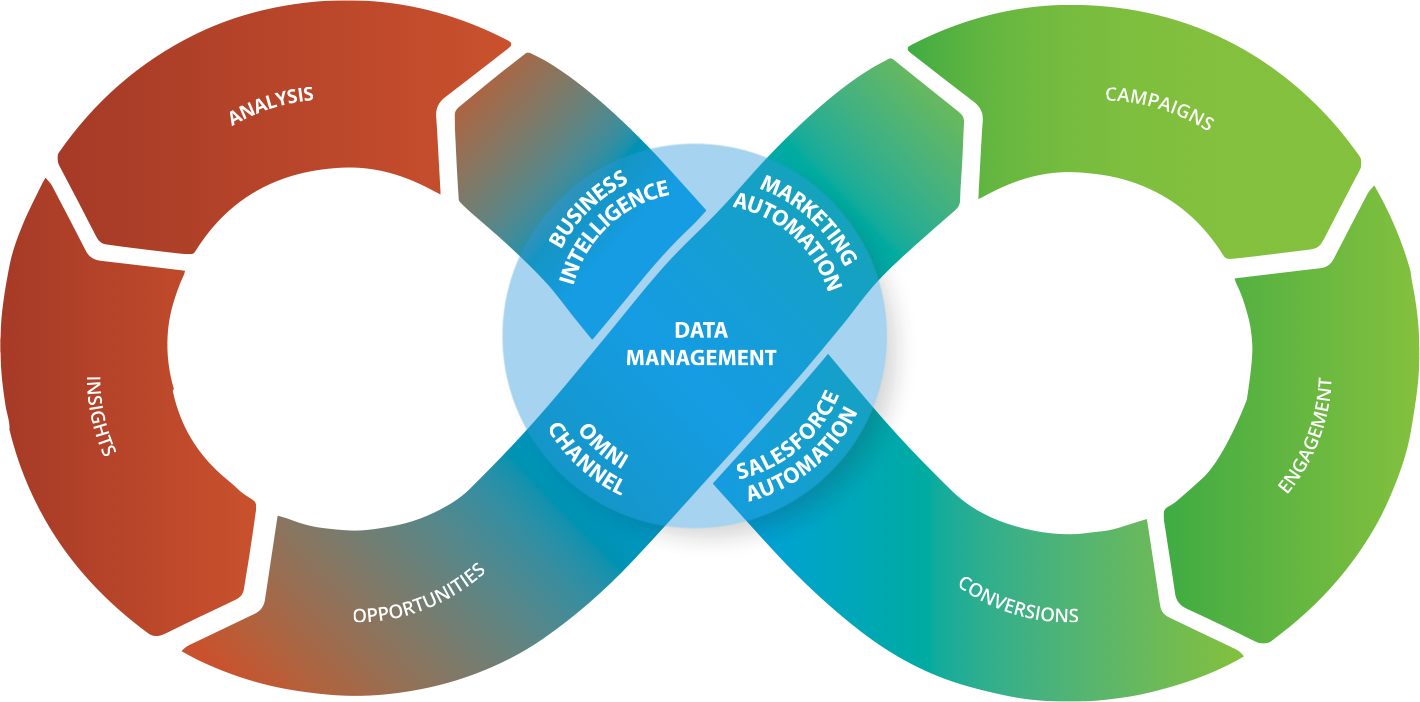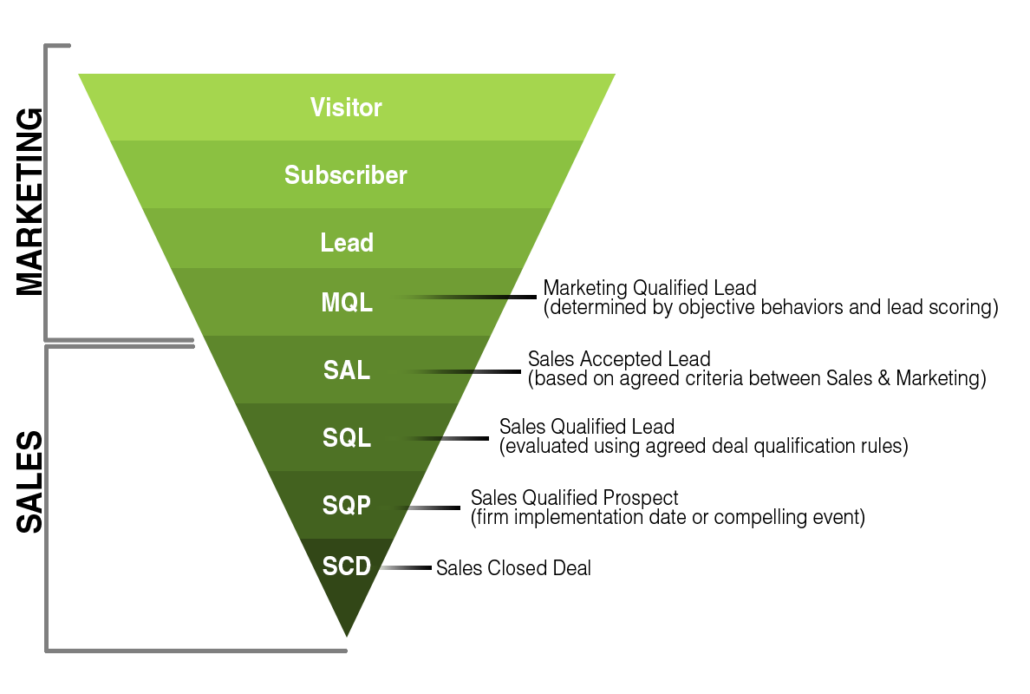Closing the Loop – Aligning Marketing and Sales
Traditionally, marketing teams generate leads while sales teams close deals. With the web and the shift of the customer buying process and business-to-customer interactions, the lines between marketing and sales are blurred. Companies today know that they need to adapt, but how?
Growth-focused companies often wrestle with aligning marketing and sales to maximize revenue growth. A key goal is establishing a “service level agreement” between marketing and sales teams that defines both the required quantity and the characteristics of the ‘MQL” or Marketing Qualified Lead”. But there is more to it then that. Marketing and sales teams today, must work together to orchestrate the customer experience end-to-end and generate leads, nurture opportunities in the pipeline and ultimately convert sales. And, they need to track this end-to-end so they can attribute revenue to marketing programs and campaigns and see what is working and not working.
A useful framework to manage this end-to-end process is the “Closed Loop Marketing Architecture“.
Some Background
Closed-Loop Marketing is used extensively in the pharmaceutical industry to track multi-channel programs end-to-end in order to optimize revenue results. Yet, the strategy of “closing the loop” is applicable across any industry that engages in a considered sales process. It is especially impactful in structuring the B2B marketing and sales process.
We developed the Closed Loop Marketing Architecture to describe the process of continuously engaging customers and prospects with tailored experiences through the integration of marketing and sales. A prerequisite of Closed Loop Marketing is a set of critical technology systems with data at the center.
By monitoring interactions with customers, driving conversions, and tracking results, you can establish a 360 degree view of the customer and track the impact of marketing campaigns on actual revenue results.
The Blueprint below shows how different stages of the process flow continuously to “close the loop” and drive revenue. The continuous cycle is the foundation of an integrated marketing-sales relationship.
Although there are many benefits to implementing a Closed Loop Marketing Architecture, the alignment of marketing-sales is perhaps the most important.
Why is marketing and sales alignment important?
Sales excellence and professional selling remains a critical capability for businesses with complex products, solutions and services. Yet, we also recognize how the web has empowered buyers to “self sell”. This means that more of the buying cycle – particularly at the top and the middle of the funnel is more buyer controlled and self directed. Research shows that in many industries up to 80% of the buying decision is made before the customer engages with the sales team.
If this is the situation in your business, it is more important that you view the marketing and sales funnel as a single continuous and aligned process. A single ‘value chain’ for revenue performance.
The alignment of marketing and sales has direct impact on both micro conversions (e.g. clicks and form fills) and macro conversions (e,.g. request for demo, sales meetings). Tracking results and using marketing and sales data continuously in the development of customer engagement helps tailor customer engagement and accelerate conversions across the end-to-end customer lifecycle.
According to MarketingProfs, companies with integrated marketing and sales operations generate 208% more revenue from marketing than without effective marketing-sales processes.
Although it may seem obvious that aligning marketing and sales is important, a 2016 study showed that 67% of the companies in the study do not reward their sales team for supporting marketing objectives.
In addition, there is a common theme that we see in marketing and sales teams. We see sharp disagreements in the perception and definition of a ‘lead’ and the percentage of leads that are qualified or justify follow-up. We see marketing teams claim success for the top of the funnel lead generation volumes, complaining about poor sales follow-up and execution. We see sales teams complain that the quality and often the quantity of leads received by marketing are of a poor quality.
We see a lack of clarity on marketing and sales goals. Marketing and sales teams do not share revenue quota responsibility and fail to reach an agreement on the definition of the ‘MQL’ and ‘SQL’ and on the volume, stages and characteristics of the leads needed to achieve specific revenue objectives.
As misalignment of marketing-sales remains pervasive in B2B, despite being so essential to revenue growth, the Closed Loop Marketing Architecture can provide a process and systems framework for continuous, sustainable marketing-sales integration.
The Technology Stack for Closed Loop Marketing and Sales
Closed loop marketing involves actively focusing on integrating data in a continuous loop by optimizing campaigns and customer engagement through analysis and insights. This insight provides more predictive targeting and messaging at different stages of the buyer lifecycle.
Data management is at the heart of the loop. The Closed Loop Marketing Architecture describes a 360-degree view of both customer interactions and business systems. With a data-driven process, you can progressively capture customer behavior, persona, demographic and account data across the customer buying lifecycle and incorporate them in your marketing and sales organization.
Five underlying systems that make up the Closed Loop Marketing Architecture ‘technology stack’:
- Data Management: Collecting, storing, and indexing the data from interactions and systems to inform strategies, attributions and customer experience.
- Omni-Channel: Websites and media channels to reach the customer across touchpoints to deliver tailored experiences.
- Marketing Automation: Orchestration of campaigns (landing pages, forms, workflows, etc.) using automated tools, business rules to engage audience segments.
- Salesforce Automation: Enabling customer management and sales effectiveness by tracking and managing customer relationships, accounts and opportunities.
- Business Intelligence: Tools for analytics, closed loop reporting and tracking for more predictive decision-making and attributions.
These five categories of technology systems are pivotal in optimizing your sales and marketing processes and, as such, deserve a razor-sharp focus in your business strategies. In some instances, multiple capabilities are embodied in single integrated technologies.
Funnel Math and Performance Metrics
Ensure that the appropriate metrics are used to track performance at the various stages of the buy-sell process. If you measure the wrong metrics, you will not be able to glean meaningful insights from your analysis of your sales data. This may result in a lack of understanding in your customer personas, behavior, and thus ineffective predictive conclusions.
Your metrics and reporting should be structured around a defined set of optimized customer stages, such as those shown in marketing-sales funnel below.
The Closed Loop Marketing Architecture utilizes a top-down approach to marketing and sales structure to ensure that there is this common understanding. For instance, in the Campaign and Engagement stages, Marketing and sales teams should agree a defined lead scoring processes. Collaboration between marketing and sales teams provide a mutual commitment to shared revenue performance goals and definitions.
Attribution and Aligning Investments
Closed Loop Marketing Architecture helps to increase efficiency of marketing and sales resources. When you “close the loop”, you track conversions across the stages of the funnel and track actual revenue conversions. You can manage the marketing attribution to particular campaigns and content, applying rules like first campaign touch, last touch as well as multi-touch attribution. You can track the performance of the end-to-end funnel and address critical performance gaps with improved content and programming.
Closed Loop Marketing centers on maximizing the impact of your resources on customer engagement through integrating marketing and sales and tracking performance across the end-to-end customer lifecycle – an essential part of any successful revenue growth company.
This article was written collaboratively by John Stone and Emily Tang. If you would like to learn about Closed Loop Marketing, additional blog posts explore the topic in various detail. We also offer a downloadable blueprint as an introduction to the stages and systems of the Closed Loop Marketing Architecture.




